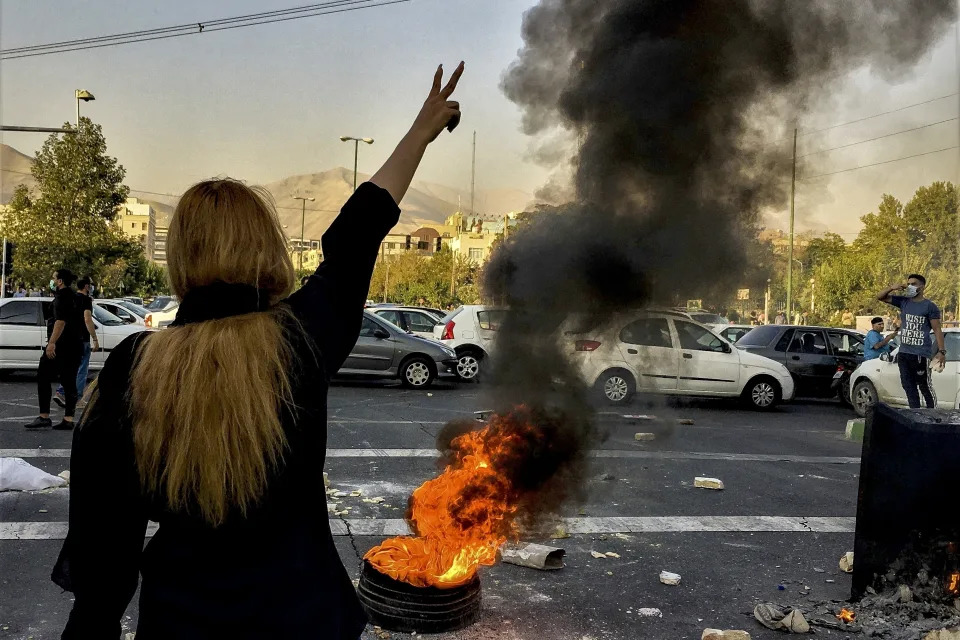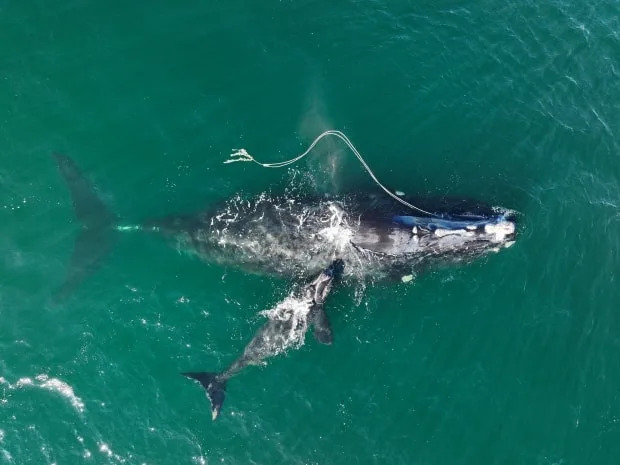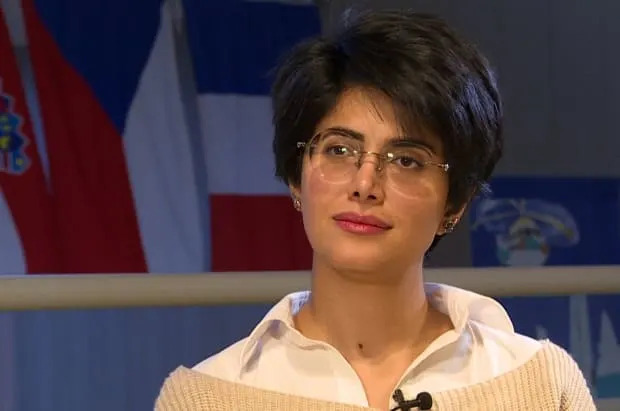LONG READ
David Segal and Dylan Loeb McClain
Sun, December 4, 2022

American teenager Hans Niemann defeated Magnus Carlsen, the world's best chess player, this fall. Then Carlsen accused his opponent of cheating. It's either overdue justice or paranoia. (Sean Dong/The New York Times)
The day before he beat the greatest chess player in the world, Hans Niemann was a curly-haired 19-year-old American known only to serious fans of the game and mostly as an abrasive jerk. Everyone, it seems, has a story. Like that time in June, when he’d lost in the finals of a tournament in Prague, then stood in the ballroom of the hotel where the event was held and ranted against the city and the accommodations.
“I tried to talk to him about it,” said Jacob Aagaard, a Danish grandmaster who has taught Niemann and known him for years. The talk did not help. Niemann brushed off all advice, predicting he’d soon play at such an exceptional level that he’d get invited to tournaments no matter how boorishly he behaved.
On Sept. 4, Niemann defeated Magnus Carlsen, an even-tempered, 32-year-old Norwegian who had become a grandmaster at 13, earning him the nickname “the Mozart of chess.” Carlsen went on to win five world championships as well as mainstream celebrity, including a stint as a spokesmodel for fashion brand G-Star Raw.
The loss to Niemann occurred at the Sinquefield Cup, a prestigious round-robin tournament in St. Louis with a $350,000 purse. Carlsen did not take this setback quietly. Instead, he accused his opponent of cheating, though he didn’t say so outright. He announced in a tweet that he was quitting the Cup and appended a video clip of a well-known professional soccer coach saying, “If I speak, I am in big trouble.”
The cheating implication was so obvious that Sinquefield organizers quickly added a 15-minute delay to the online broadcast of games, and players were checked with a radio-frequency scanner. This fueled speculation that Niemann was getting help from some kind of electronic device, secreted on, or maybe in, his body.
By the time that Niemann sat for a post-match interview with a Sinquefield commentator two days later, he was livid. Yes, he had confessed to cheating on Chess.com, the largest online playing platform, once when he was 12 and again at 16, to expand his online following and compete against better players. But he had learned his lesson and toiled for redemption.
He had never, he stated emphatically, cheated in a live match. With the internet filled with theories that he’d used a sex toy rigged to receive signals from a confederate, he was ready to take dramatic measures to prove his innocence.
“They want me to strip fully naked, I’ll do it,” he told the interviewer. “I don’t care, because I know that I’m clean. You want me to play in a closed box with zero electronic transmission? I don’t care, you know? Name whatever you guys want.”
It was the bizarro start of a ruckus still rattling the echo chamber of podcasts, Twitch streams and YouTube channels devoted to chess — which is now surprisingly vast. Like bicycles and pet adoption, chess soared in popularity with the pandemic and the Netflix hit “The Queen’s Gambit.” Since the start of 2020, daily user figures have quintupled to 5 million at Chess.com, and memberships have tripled to 94 million, according to the platform.
The site has become the virtual hangout, spectator viewing stands and venue of choice for players at every level. So the scarlet “C” on Niemann burned even brighter after Chess.com released a 72-page report in early October concluding that he had cheated in more than 100 games on its platform. Then it went further. Niemann’s rise in the ranks of over-the-board chess, as the in-person version of the game is known, was “uncharacteristic,” the report stated, implying that he’d cheated at live tournaments.
In sum, the game’s most gifted player, never known as a sore loser, had called out a confessed cheater. And the game’s most powerful and popular platform then said, in effect, “We stand with Magnus.”
An uproar ensued. Beneath it, facts that complicated the narrative were easy to miss. A week and a half before Carlsen lost in St. Louis, Chess.com made public an $82 million offer for his online chess training company, Play Magnus, a takeover that will essentially turn him into Chess.com’s most valuable asset. And as more grandmasters studied the epochal game, a consensus formed. Niemann appeared to simply outplay Carlsen, with moves that appeared perfectly human.
Someone was wronged in St. Louis on Sept. 4. But who?
“Here’s the caveat: I really don’t like Hans at all, and I’ve not liked him for a long time,” said Ben Finegold, a grandmaster who has taught Niemann. “But obviously the truth is more important than whether you like someone.”
The Trash Talker
This entire melee will be fought out in a $100 million defamation suit that Niemann filed in a district court in Missouri in late October against Carlsen, Chess.com and Hikaru Nakamura, one of the top players in the world and the game’s most influential streamer, who, the suit claims, amplified the cheating charge on his very popular Twitch channel. The point of the litigation, lawyers wrote in their complaint, is to “recover from the devastating damages that defendants have inflicted upon his reputation, career and life by egregiously defaming him.”
On Friday, lawyers for Chess.com filed a motion to dismiss Niemann’s case and called it a “public relations stunt.”
None of the players who are party to this suit would discuss it for this article.
The lawsuit suggests that Niemann will deal with the shadow over his name the same way he plays chess — by attacking. From the start, he has favored a poke-in-chest, trash-talking approach to the game.
A Russian grandmaster and former coach named Maxim Dlugy first encountered him at the 2014 Youth Championships in Durban, South Africa, and remembers an 11-year-old winning just-for-fun games against coaches from Belgium. The boy mocked them so viciously that they wanted to pummel him.
“One of the guys from the family that had hired me had to step in and say: ‘Hey, guys, take it easy. He’s a kid; he’s a kid,’” Dlugy recalls. “That’s how bad it was.”
Niemann was born in San Francisco in 2003 and started playing chess as an 8-year-old in the Netherlands, where his family had relocated for a few years. When the Niemanns — his parents, David and Mary, and three younger sisters — returned to the Bay Area, Dlugy gave him lessons over Skype.
“He was one of the most talented kids I’ve met,” Dlugy recalled. “Just incredible. Give him the right information and he immediately integrates it. Like a sponge.”
Niemann wrote about this period of his life in an essay for Chess Life published last year. He played his first US Chess-rated tournament in middle school in 2012 and a 100-tournament spree his first year back in the United States.
“I simply loved the game,” he said. “If it were possible, I would have played multiple tournaments every day.” He was soon ranked third nationally in his age group.
By the time Niemann was in eighth grade, his family had moved to Connecticut, and he’d achieved a rating of 2,400, 100 points shy of the level to qualify for grandmaster. (The game’s governing body, the International Chess Federation, known by its French acronym, FIDE, manages the game’s ratings.)
When Niemann’s quest for 2,500 stalled for more than two years, the love-hate phase of his relationship with chess began. He still toggles between extreme cockiness after good results and deep despair after bad ones.
“The fact that I’m alive is a miracle,” he said, half-seriously, in a postgame chat with a tournament interviewer in May. “After I lost this first game, I think I was really just ready to just go into the ocean and never come back.”
He was an indifferent student in middle and high school, until earning a scholarship to Columbia Grammar & Preparatory School on the Upper West Side of Manhattan. To attend, he moved at 16 into a studio apartment near the school and became financially independent, supporting himself by working up to 30 hours a week as a chess teacher.
In his biographical essay, he framed this unusual decision in purely economic terms. (“You try finding an apartment in New York for a family of six!”) But several friends said there was tension between Niemann and his father, which the friends would not describe. The elder Niemann is a building contractor who declared bankruptcy when he and his family lived in California.
COVID struck midway through Niemann’s first year at Columbia Prep, and he started attending classes online. He also played virtual chess in marathon jags, stopping only to eat Chipotle, Popeye’s and a variety of junk food. He built a following for his Twitch channel, a riveting spectacle whether he won or lost. He would shout obscenities in a frenzy and pound on the table, causing his laptop camera to jump as if an earthquake had struck.
“How am I this good at this game?” he asked, rhetorically, on the verge of a victory. (This is the printable version.) “Oh. My. God! Get down and bow!”
There was a warm and vulnerable side to Niemann, familiar to acquaintances. Soon after he moved to the Upper West Side, he went to work for Shernaz Kennedy, 68, a woman international master and confidant of former world champion Bobby Fischer. She hired Niemann to teach at her chess school, Top Level, which operated out of the basement of a church.
“I had, like, 30 kids from all different schools and all different levels, and he had them wrapped around his finger,” she said. “He would sit with them, giving 100% of himself.”
In gatherings of other strong players, though, the brash and peacocking Niemann came to the fore — interrupting his peers, cracking wise, asking jokey questions of teachers.
“It was constant,” said Aagaard, the Danish grandmaster. “He was hiding, in a strange way, by making a public spectacle of himself. He was hiding from failure by pretending not to care.”
Then he stopped pretending. It happened after he was rejected by Harvard University and decided to bet his entire future on chess. He quit his teaching jobs, packed a small bag and began roughly two years of nonstop world travel to play tournaments and exhibitions — in Turkey, Spain, Latvia, Portugal, Poland, Cuba, Croatia, Norway, Italy, Serbia, anywhere with boards, clocks and players. He graduated from Columbia Prep in 2021 but had been strictly an online presence.
“I was in an English class with him, and he tuned in from about 20 countries,” said Daniel Levkov, a longtime friend and fellow chess player. “He was in a different country every week. By then he knew that school wasn’t his route.”
Chess was his route, and the world championship his ultimate destination.
“Anything else,” Niemann said in an interview with Chess Life in April last year, “and I’ll be disappointed.”
Social Media Stars of Chess
By the time Niemann started his trek, Carlsen had already evolved from prodigy to phenomenon to brand and institution. He has the highest rating in history (2,882), surpassing Garry Kasparov (2,851), who had dominated for years. “He doesn’t have a weakness,” is a common refrain among rivals.
He’s also funny and personable and has parlayed his skills and charisma into fame that is rare in the game. He’s appeared on Time magazine’s list of the 100 most influential people and a Norwegian reality TV show called “Don’t Laugh in the Cabin.” Mastercard is one of his corporate sponsors. His net worth has been estimated at $50 million.
A portion of that comes from his 9% stake in Play Magnus. The company markets lessons, training and artificial intelligence that can mimic play at 30 levels. But it has struggled since going public in 2020. When Chess.com made its August bid, Play Magnus shares traded at less than half their initial public offering price.
Once regulators approve the deal, Play Magnus will be folded into Chess.com, an American company that started as an underdog and has turned into a giant. It was founded in 2007 by Erik Allebest and Jay Severson, friends who’d met at Brigham Young University and bought the domain name for $56,000 out of a bankruptcy auction.
For years, its subscriber base and profits rose gradually and steadily. Then the pandemic struck.
“You could track it by country,” Allebest said. “India locked down; registrations from India went through the roof. Italy locked down; registrations went through the roof. Literally our team went to 24/7, white-knuckling to scale our service.”
A few months after the pandemic influx to chess began, Netflix released “The Queen’s Gambit,” a fictional account of a young woman’s journey from orphanage to global chess supremacy. It would become a cultural touchstone and the most-watched show on the streaming service in more than 60 countries.
“It was like someone poured gasoline on the same fire,” Allebest said.
Chess players became social media stars. Nakamura, one of the defendants in the defamation case, has 1.5 million Twitch followers, a feat he’s achieved through celestial play — he’s ranked fifth in the world — and iron-man verbosity. In June, he signed with Misfits Gaming Group, an esports and entertainment company that is dreaming up shows to sell to places like CNN and Netflix.
Today, chess tournaments have pretty high production values — swooshing graphics, on-scene interviews, play-by-play commentators seated at newscaster desks. The model is based on coverage of professional sports games, with a big difference: There’s no action, at least not in the conventional sense. The game has hardly changed in 1,500 years. It’s still hour upon hour of two people staring at a board and cogitating. If a sentence like, “He blundered queen d8, queen d3!” doesn’t quicken your pulse, there isn’t much to watch.
If it does, these games are thrilling, cerebral contests that have elegance, aggression, subterfuge, brilliance and suspense — “Game of Thrones” boiled down to its regicidal essence. Unlike the HBO show, this one never stops. There are tournaments nearly every weekend around the world.
Graduating into the class of aspiring professionals playing these tournaments didn’t cause Niemann to grow up and behave. He pounded his fist when he lost a game in Dubai, United Arab Emirates, and dropped F-bombs in a postgame interview in Miami, complaining about a technical failure. He looked opponents in the eyes a little too long, another no-no.
Some chess watchers were delighted. A norm-busting rascal, at long last.
“I was like, this is what we need in chess,” said Levy Rozman, the face and voice of Gotham Chess, a popular YouTube channel. “We don’t have a Conor McGregor,” he added, referring to the mixed martial arts champion known for altercations and arrests.
Niemann’s peers were not as pleased.
“He’s pretty much disrespected everybody in the chess world at this stage,” said Wesley So, an American player ranked in the top 10, during an interview in October at the U.S. Chess Championship. “Calling other players idiots and stuff.”
‘Something Fishy’
The cheating saga starts a few weeks before the Sinquefield Cup, in August at the FTX Crypto Cup in Miami, one of the now-bankrupt exchange’s forays into corporate sponsorship. Niemann was the lowest-ranked player in the tournament, and he did something improbable: He beat Carlsen with the black pieces, which have the disadvantage of moving second.
It was a career-making victory, and it would have caused most players to celebrate as if they had just hit the Powerball. Niemann instead gazed blankly at the tournament’s interviewer, who approached with a microphone immediately after the game and asked for his thoughts.
“Chess speaks for itself,” Niemann said, deadpan. Then he walked away.
If the loss or that response threw Carlsen, he hid it well. He won the next three games against Niemann and then the whole tournament.
The Sinquefield Cup began Sept. 1. The two met in the third round and played what is now one of the most closely dissected games in chess history — not just the moves, but the behavior of the players. Early on, with his clock running, Niemann glances absently around the room as he sips water, the picture of ease. He chews gum. At one point, he glowers at Carlsen like a cannibal trying to stare down his dinner. Carlsen covers his entire face except for his eyes, trying to tune out the universe.
On YouTube and podcasts, grandmasters studying the game said the champ’s opening had lacked oomph and failed as an effort to throw his opponent off balance. Niemann carefully conserved an early advantage that he never surrendered. Carlsen has long been known for his mental stamina and as a genius for turning around even dire-looking predicaments. Not this time. An unbeaten streak of more than 50 games of over-the-board chess had ended.
Niemann gave a sit-down interview to a tournament commentator, and it quickly became Exhibit A for skeptics. He said that “by some miracle,” before the game, he’d studied how to counter the opening that Carlsen had deployed, even though, observers later claimed, Carlsen had rarely used it. Or had never used it, by the reckoning of others.
And for reasons that baffled everyone, Niemann spoke now and then in the interview with an unplaceable European accent, adding to the overall sense of imposture. It didn’t help that he came across as obnoxious. Gone was the curt, affectless Hans of Miami, and in his place was a puckish man-child who insulted Carlsen, and himself, at the same time.
“Even if there was a draw, I think he was just so demoralized because he was losing to such an idiot like me, you know?” he said, sounding both sheepish and elated. “It must be embarrassing for the world champion to lose to me. I feel bad for him.”
Players knew that Niemann was good. He was officially awarded grandmaster status in January 2021 and by May of this year he stood among the top 50 players in the world. But was he defeat-Magnus-with-the-black-pieces good?
Grandmaster Fabiano Caruana framed the matter succinctly.
“It’s either the game of a genius,” he said on a podcast, “or something fishy.”
An Online Version of Steroids
It’s been 25 years since Deep Blue, a 1.4-ton computer programmed by IBM, defeated Kasparov, the reigning world champion, marking the first time a computer bested the most accomplished player on the planet.
Since then, computer chess programs — known collectively as “engines” — have slimmed down and now easily fit on smartphones.
Today, the most popular chess engine is Stockfish, an open-source program that hoovers up data from millions of top-level games and translates this monumental library of information into tactical calculations that can “see” a dozen or more moves ahead.
To Danny Rensch, chief chess officer of Chess.com, chess engine abuse is the game’s version of steroids.
“We’re actually looking at what esport industries have done, what every international sporting community has done, from the NBA to the NFL, to attack performance-enhancing situations,” he said. “We have to address this head on.”
To ferret out cheaters, Chess.com uses an algorithm to determine how closely moves mirror those recommended by an engine. At lower skill levels this is straightforward, like noticing that a fifth grade tennis player is serving like Rafael Nadal.
At higher skill levels, it gets trickier. (A top-50 tennis player might serve very much like Nadal.) So Chess.com looks at other factors, including a player’s past performances. It also studies browser behavior because the most inept cheaters simply keep two screens open on a web browser, with the game on one and an engine on another, toggling between moves. It is a popular enough stratagem to acquire its own name, second screening.
Busting cheaters with statistics is not like catching a baseball player with a corked bat, which will result in an instant ejection. Chess.com’s Fair Play team, as it’s called, acts after the fact, to the deep frustration of top players.
“During COVID there were so many cheaters, and it kind of made everything a huge mess,” said Andrew Tang, an American grandmaster, from his dorm room at Princeton. “I’m playing a tournament for $1,000, and I lose to some guy who cheated. Really frustrating.”
A Childish Mistake
If Niemann had cheated at the Sinquefield Cup, nobody knew how. But by the time he sat for another postgame interview, on Sept. 9, Chess.com had emailed to tell him that his account had been suspended again and that his invitation to the Chess.com Global Championship, which would start Sept. 14 and offer a total purse of $1 million, had been rescinded.
Enraged, Niemann called Carlsen’s cryptic tweet and Chess.com’s suspension a “targeted attack.” If the leaders of the company thought he would be too embarrassed to publicly admit his past transgressions and defend himself, they were wrong.
He explained that he had cheated, years ago: at the age of 12 at a single event with prize money. At 16, he cheated again, this time to attract subscribers to his Twitch stream.
“I made a childish mistake, and I will have to live with that,” he said, straining to control his emotions. Since then, he said, he had not cheated and had thrown himself into chess, for redemption and to demonstrate to himself and everyone else that he did not need artificial intelligence to compete with the greatest players in the world.
“That has been my mission,” he said, “and that is why I’ve lived in a suitcase for two years, that is why I have played 260 games in one year, that is why I’m training 12 hours a day — because I have something to prove.”
The controversy had only begun. On Sept. 19, Carlsen had a rematch against Niemann at the Julius Baer Generation Cup, an online tournament that opened with a round robin. Carlsen played one move, then forfeited. He lost that game but remained in the tournament, which he won, and Sept. 26 released a statement, via Twitter, explaining himself.
“I believe that Niemann has cheated more — and more recently — than he has publicly admitted,” Carlsen wrote on Twitter. “His over the board progress has been unusual, and throughout our game in the Sinquefield Cup I had the impression that he wasn’t tense or even fully concentrating on the game in critical positions, while outplaying me as black in a way I think only a handful of players can do.”
From any other player, this might have been considered self-flattery and very weak tea. But the body language of Carlsen’s opponents invariably reflects total focus and stress. Also, he’d never leveled a charge like this before. Prominent voices offered support.
“@MagnusCarlsen has done everything right so far, and with class,” tweeted Romain Edouard, a French grandmaster, on the 27th.
“Immense respect for the world champion for taking a principled stand on an important issue,” tweeted R.B. Ramesh, a popular chess coach, the same day.
Others had misgivings. FIDE weighed in, pointing out the “moral responsibility” of the world champion in a statement. “We strongly believe,” the organization wrote, “that there were better ways to handle this situation.”
The next week, Chess.com released its report about Niemann, and it was withering. Not only had Niemann cheated in more than 100 games on the site, he was untruthful about his past. He’d cheated at events with money at stake four times, not once, as he’d stated in St. Louis.
“Given his history on our site,” the report said, “we did not believe that we could ensure that he would play fairly in our online events until we could re-evaluate the evidence and our protocols.”
To reach its conclusions, the company conferred with the leading authority on cheating and chess, Kenneth Regan, a professor of computer science at New York’s University at Buffalo and a computational complexity theorist. On one essential point, though, he dissented.
Chess.com described Niemann as “the fastest-rising top player in Classical OTB chess in modern history.” Specifically, the company found that the amount of time it took him to climb from just below a rating of 2,500 to nearly 2,700 — the velvet rope separating the world’s elite players from everyone else — was faster than all of his contemporaries. It took him about 18 months.
“That’s just wrong,” Regan said.
No Red Flags
Chess.com didn’t account for what he called the pandemic lag. Over-the-board tournaments ceased as COVID infections raged, so for months, Niemann was playing nearly manic amounts of chess matches online, which do not affect one’s FIDE rating. When live tournaments resumed, he was like a student who had been cramming nonstop without an exam to show off what he’d learned.
Add the downtime imposed by the pandemic and the climb to nearly 2,700 from 2,500 actually took him 27 months — the same as many other gifted players. Also, Niemann played 259 official games last year. (By contrast, Carlsen played 41.) As a number of grandmasters have noted, factor in the sheer number of games Niemann played and his progress seems impressive but not extraordinary.
As for Niemann’s over-the-board games, Regan has studied many of them, and not one showed evidence of cheating.
“Over-the-board allegations, completely unfair,” he said.
Chess.com’s report lands in the same place. Though it clearly stated Niemann had cheated in online play earlier in his career, after many charts and graphs that look askance at what happened when Niemann sat down to compete at in-person tournaments, the report comes to this conclusion: “There is nothing in our statistical investigation to raise any red flags regarding Hans’ OTB play and rise.”
Which raises the question of why the report was necessary. The company does not cite any examples of Niemann cheating on Chess.com since 2020 and ultimately exonerates his over-the-board play. About the worst it can say on the subject is that “certain aspects” of the Sept. 4 game against Carlsen “were suspicious,” though it does not say what those aspects were. By barring him from the site again, and from the Chess.com Global Championships tournament in October, it appears that he was sentenced twice for the same pre-2022 crimes.
“There’s no evidence in the report that Hans cheated recently, so it’s very strange,” said Finegold, the grandmaster who lives in suburban Atlanta. “It just seems like they want to back up what Magnus is saying for business reasons.”
The company did this, Finegold and other critics say, for a very mundane purpose. Any taint left on Carlsen would tarnish the $82 million just spent to acquire Play Magnus.
False, say Chess.com’s executives. The company wanted to keep its ban on Niemann private, but he made it public in that Sinquefield interview and was dishonest about his cheating in the past on the site. (Niemann and his attorneys declined to comment.)
“We had to defend ourselves,” Allebest wrote in an email, “and we wanted to do it in as thorough a way as possible.”
Finegold is one of the few notables in the game willing to publicly chastise Chess.com. The company’s owners are friendly and forthcoming, authentic fans of the game who have won the admiration of many players. They are also feared, at least by some. One grandmaster said he worried about getting bounced from the site if he criticized it in print, which could cost him dearly because it’s where his fee-paying students play and learn.
Maybe this grandmaster’s concerns are irrational. But Finegold says that after he lambasted Chess.com’s handling of the Niemann affair on his Twitch stream, Danny Rensch sent an email that sounded like a not very subtle threat.
“He suggested to me that maybe because of all the negative things I’d said about them, that maybe I didn’t want to be on Chess.com any more,” Finegold said. “They would deny ever doing anything retaliatory, but I don’t believe that.”
(Rensch described his discussion with Finegold as “a good, healthy email exchange.”)
The point made by Finegold is that Carlsen made an egregious error by tagging Niemann as a cheater — “He’s a big crybaby,” as Finegold put it — and that Chess.com blunted criticism of the reigning champion by turning everyone’s attention from the accuser back to the accused.
Carlsen has not elaborated on his own motivations. But there’s no reason to doubt his original explanation: He thinks Niemann cheats. Maybe he heard the same murmurs about Niemann that Caruana described in a podcast in September.
“On half a dozen occasions over the past year, people asked me: ‘What do you think about him? Do you think he’s cheating?’” Caruana said.
Carlsen wrote in his Sept. 26 tweet that he had thought about quitting the Sinquefield Cup as soon as he learned Niemann, a last-minute addition, would compete there. This suggests he’d decided Niemann was cheating before arriving in St. Louis. This might explain Carlsen’s subpar performance against Niemann. Nothing will psych out a player quite like the sense that he’s secretly battling an unbeatable computer.
“I thought Carlsen literally cracked at the end,” said Viswanathan Anand, a five-time world champion from India. He was also astonished to learn that Carlsen and others believed that Niemann had cheated.
“Am I naive,” Anand asked, “or are my colleagues paranoid?”
An Existential Threat
At the 46th Guernsey Chess Festival in mid-October paranoia was a popular topic. The tournament is played on one of the Channel Islands near France, best known for its hospitable approach to corporate taxes, and first prize was a modest 1,600 pounds, about $1,900. It was mostly men, many of them in chess-themed hoodies, and a kind of camaraderie was part of the atmosphere. The games were played in a stately old church, and once they were over, competitors headed to an adjacent room to offer each other tips on every move they’d just made.
Many were eager to discuss the fallout of the Carlsen-Niemann kerfuffle.
“Because of Magnus, everyone I’ve been around is accused of cheating,” said Jon Hafthorsson, a Swede who’d flown in for the tournament.
“Everyone is suspicious,” said Thomas Villiers, a British chess teacher. “A girl got ejected from the World Junior Championships because they found an earphone in her jacket that she forgot to take out.”
Phones were prohibited in the room where games were played, which was about the extent of the anti-cheating measures in Guernsey. As Carlsen noted, more will be needed.
He described cheating as “an existential threat to the game,” and he surely has a point. It doesn’t take a fervid imagination to imagine receiver technology that is easier and easier to hide at over-the-board tournaments, or that players in online tournaments could still cheat even with three cameras trained on them, as Chess.com sometimes requires.
Niemann may have kick-started this discussion, but by any sober reckoning he is an improbable catalyst. To achieve his current rating of 2,698, he would have needed to cheat habitually for years and somehow avoided detection, from physical checks as well as Regan’s pitiless algorithm.
That feat would require a canny cheater, which, apparently, Niemann is not. Chess.com’s report includes an email sent to Niemann in September, referring to clear evidence that after appraising his earlier play it found that “you perform much better when toggling to a different screen during your moves.”
Some mastermind. Niemann was apparently second screening.
A full investigation into Niemann’s play at the Sinquefield Cup, and Carlsen’s reaction to it, is underway at FIDE, and a report is imminent. As for the defamation case, without a quick settlement it could take years to resolve. To prevail, Niemann will have to prove damages, and his lawyers seem to believe this will be a cinch. Channeling the bluster of their client, they contend in the complaint that the defendants have “destroyed Niemann’s remarkable career in its prime and ruined his life.”
That seems a stretch. True, he might have trouble getting invited to events where Carlsen is competing, given that the guy refuses to play him, but the cheating charge elevated his profile and won him new fans.
This includes the handful of young women who turned up outside the Sinquefield Cup venue during the tournament, wearing dark sunglasses and black cocktail dresses. They waved signs that read, “Gen Z’s Love Hans!” and “Hans has cool hair!”
“Just out here to show our support,” one woman said. “We love him.”
© 2022 The New York Times Company











